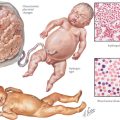Chapter 39 Pessary Therapy
THE CHALLENGE
TACTICS
IMPLEMENTATION
Cundiff GW, Amundsen CL, Bent AE, et al. The PESSRI study: symptom relief outcomes of a randomized crossover trial of the ring and Gellhorn pessaries. Am J Obstet Gynecol. 2007;196:405.e1.
Shaikh S, Ong EK, Glavind K, et al. Mechanical devices for urinary incontinence in women. Cochrane Database Syst Rev. 3, 2006. CD001756
American College of Obstetricians and Gynecologists. Urinary incontinence in women. ACOG Practice Bulletin 63. Washington, DC: ACOG, 2005.
American College of Obstetricians and Gynecologists. Pelvic organ prolapse. ACOG Practice Bulletin 79. Washington, DC: ACOG, 2007.
Anders K. Devices for continence and prolapse. BJOG. 2004;111:61.
Appell RA, Davila GW. Treatment options for patients with suboptimal response to surgery for stress urinary incontinence. Curr Med Res Opin. 2007;23:285.
Deger RB, Menzin AW, Mikuta JJ. The vaginal pessary: past and present. Postgrad Obstet Gynecol. 1993;13:1.
Greenhill JP. The nonsurgical management of vaginal relaxation. Clin Obstet Gynecol. 1972;15:1083.
Jelovsek JE, Maher C, Barber MD. Pelvic organ prolapse. Lancet. 2007;369:1027.
Lentz GM. Anatomic defects of the abdominal wall and pelvic floor. In: Katz VL, Lentz GM, Lobo RA, Gershenson DM, editors. Comprehensive Gynecology. 5th ed. Philadelphia: Mosby/Elsevier; 2007:514.
Smith RP, Ling FW. Procedures in women’s health care. Baltimore: Williams & Wilkins, 1997;127.
Sulak PJ, Kuehl TJ, Shull BL. Vaginal pessaries and their use in pelvic relaxation. J Reprod Med. 1993;38:919.
Trowbridge ER, Fenner DE. Conservative management of pelvic organ prolapse. Clin Obstet Gynecol. 2005;48:668.








